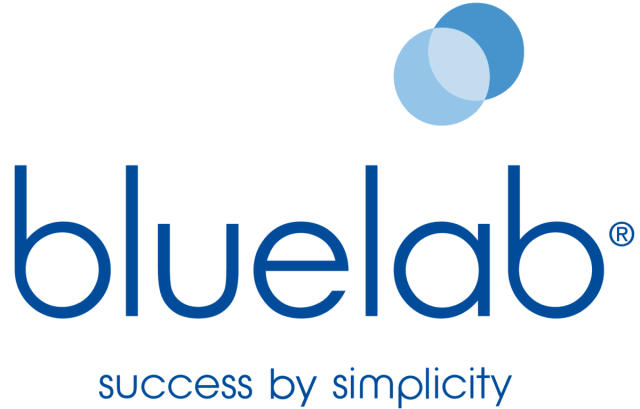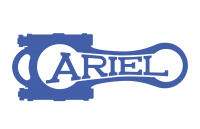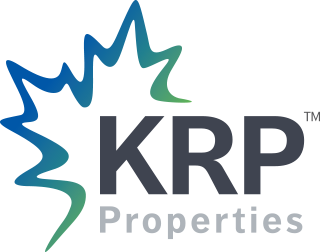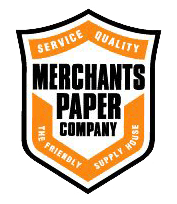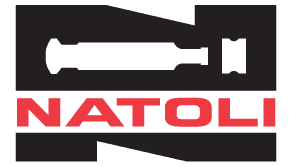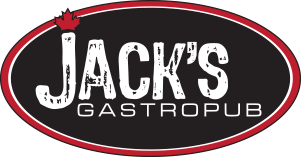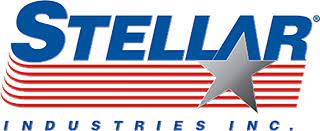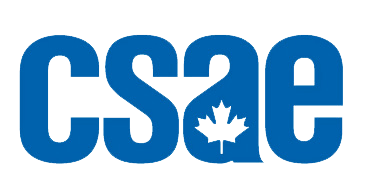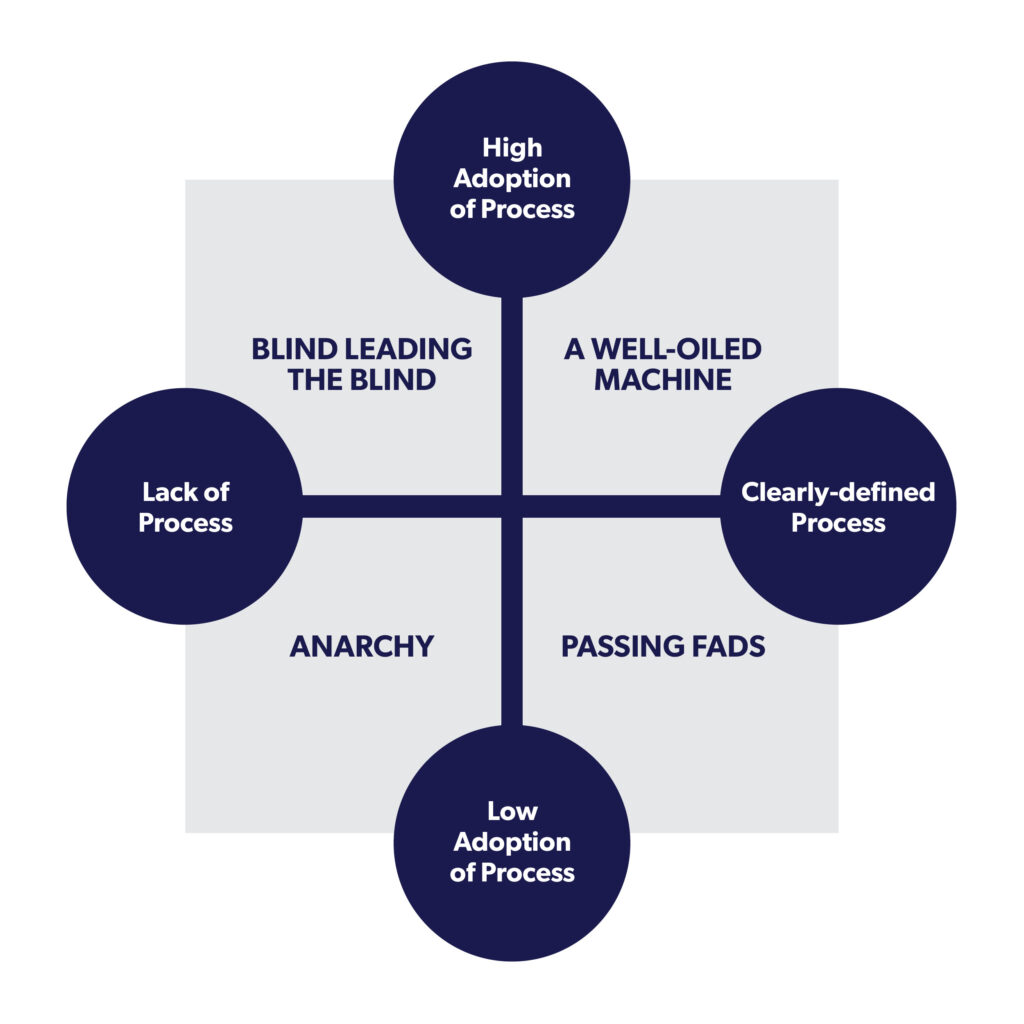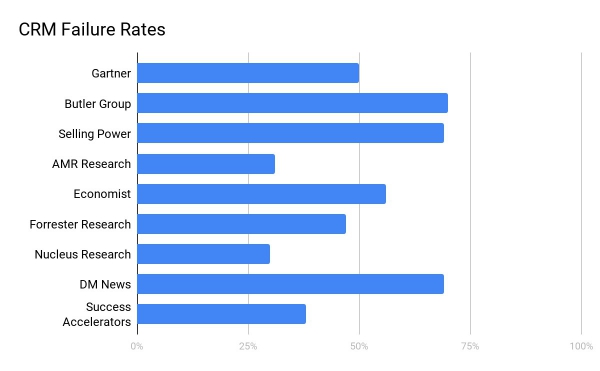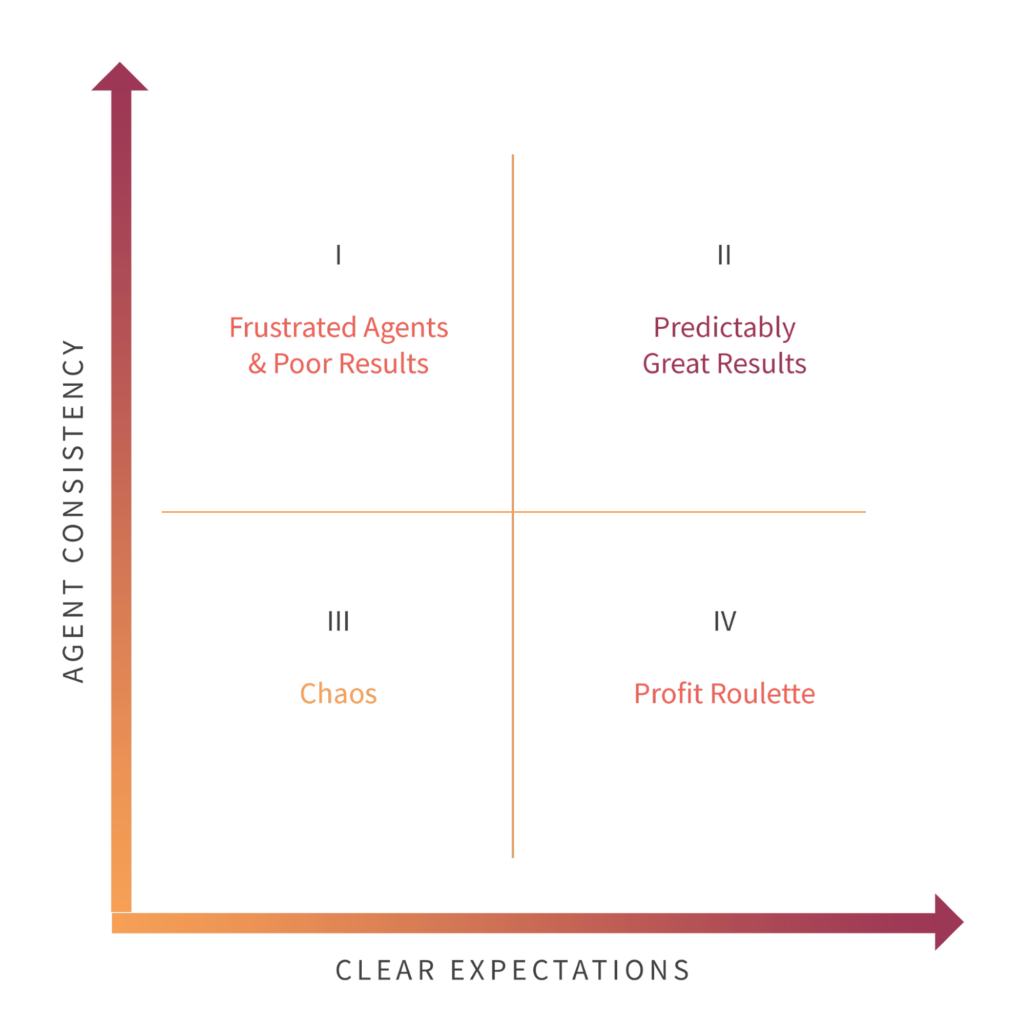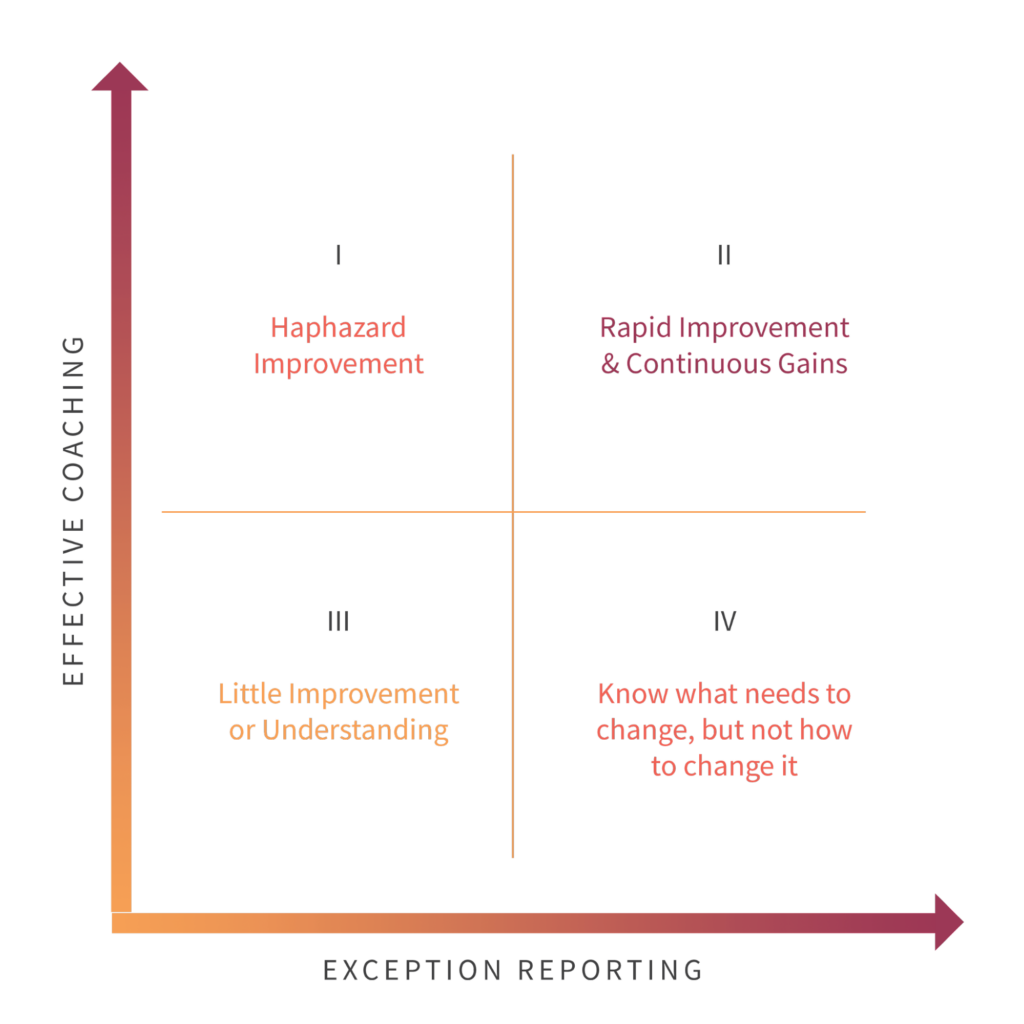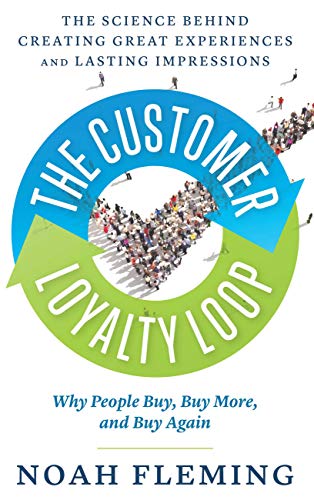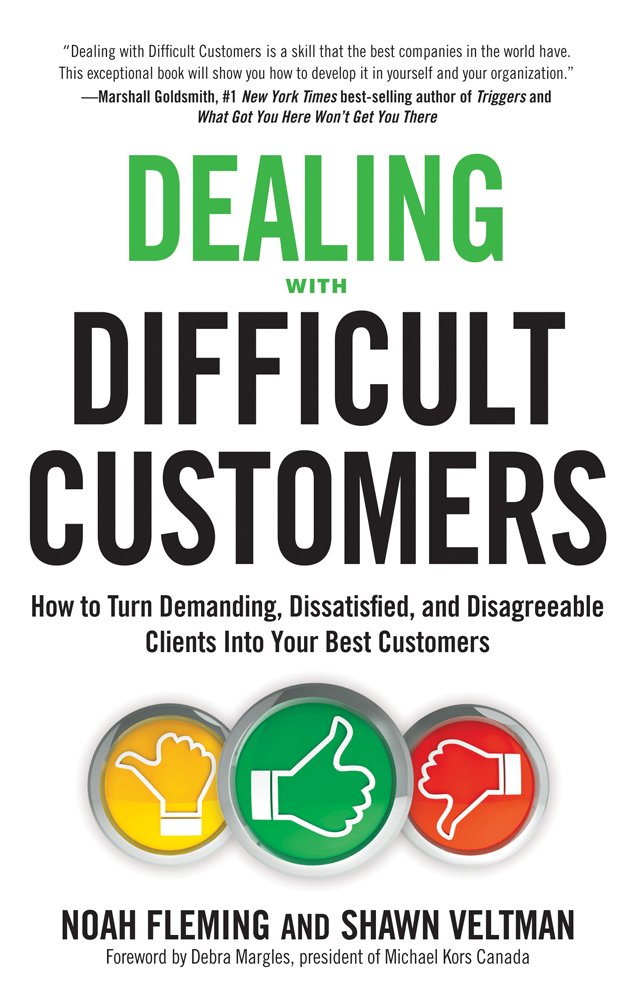The 1-Day Sales Process™
For B2B Manufacturing,
Distribution, or Service Companies
Generating Between $50-200M in
Annual Revenue
How to get a $10M-$50M+ increase in sales over the next 12 months without adding any new salespeople… and just a single day of effort.
On this page, I’ll show you exactly how you can add millions of dollars of additional sales & revenue growth with just a single day of effort, without having to spend on new salespeople, tools, software, or more training.
It sounds impossible, but the proof is with the companies we’ve helped:
I have spent the last 15 years creating real change in sales teams across dozens of industries, specializing our work with B2B companies (but I've also helped B2C businesses, trade associations, professional sports teams/entertainment companies, and more.)
Our approach isn’t based on theory or good ideas, but rather shaped from the successes I've had with hundreds of organizations.
Listen to what Speedway Motorsports (revenues north of $500M annually) said about our 1-Day Sales Process.
Who Is This For?
If you are the CEO, President or VP of Sales of a $50 - $200M company, and you’re frustrated with inconsistent or poor results from your sales team, you're in the right place. You’re tired of feeling like your top salespeople are holding you hostage, and the feeling that your worst salespeople are just using you as a gravy train.
Or maybe you’re generally happy with your sales team, but you know they could be doing so much better, but you haven’t been able to make any lasting changes to get them to the performance level you know they’re capable of.
You’ve probably tried sales training, guest speakers, events, contests, and tweaking the compensation plan, but none of that was able to get you the lasting success you were hoping for.
You’ve probably tried investing in CRMs and the latest and greatest in shiny sales tools, which maybe worked for a while, but the results were fleeting.
This is not your fault - the truth is that getting the most out of sales teams takes a set of skills that most great salespeople don’t develop naturally, and most sales managers don’t know how to put into place without alienating the sales team.
Here's The Ugly Truth about Successful Sales Teams
Here’s the truth about successful sales teams:
It’s better for you to have a terrible sales process and mediocre sales people that’s actually followed & implemented, than having 10 brilliant, superstar salespeople.
The rest of this page will explain why that’s true, but the two paragraph version is this:
Great salespeople can leave, and you’re starting from scratch.
A bad sales process (that is actually being followed) allows you to quickly identify which areas aren’t working, and can quickly be updated. And when everybody is using it, very quickly you’re ensuring that all salespeople are doing the right things, in the right order, at the right times.
Bad sales processes can be improved very quickly, and can quickly be used to create great salespeople. But without a process, your great salespeople can’t be replaced once they leave, so you’re in the unenviable position of being held hostage to their brilliance, or to be left in the lurch when they leave.
Most companies get this entirely backwards, and end up struggling for years as a result.
What makes this hard to do is to create the sales process in a way that it’s actually useful to your sales team, managed properly by your sales manager, and supported by senior management.
Failing in any of these steps will leave you with a useless policy document, rather than what should be the beating heart of your company.
We are the only company specifically committed to solving your most pressing sales problems by working with you to create a fully functional, complete sales process in under ONE day, which will continue to pay dividends for years to come.
About Me
Hi, I'm Noah Fleming and I like to think I've helped change the way the world thinks about customers.
In under five years, I have helped our clients generate over $5BN in word-of-mouth business and new revenue from their existing customers.
Now that might sound outrageous, but the reason I'm telling you has nothing to do with me.
I’m telling you this because it’s important for you to understand that not only can I help you, but I have been helping businesses just like yours for the past 15 years.
I am also author of landmark books:
Evergreen: Cultivate The Enduring Customer Loyalty That Keeps Your Business Thriving
The Customer Loyalty Loop: The Science Behind Creating Great Experiences and Lasting Impressions
Dealing with Difficult Customers: How to Turn Your Demanding, Dissatisfied, and Disagreeable Clients Into Your Best Customers.
All three books made three separate #1 category rankings on Amazon including Sales, Marketing & Customer Service.
Our Work Has Been Featured On
What I Learned About The Sales Process In Working With
Incredibly Successful Companies Across The Globe
After a lot of work with clients around the globe, I discovered something exciting - the most successful interventions I was involved in didn’t require a lot of time.
They didn’t rely on new “sales training”.
They didn’t require overhauling the way companies do business, or re-structuring their sales teams.
The most successful improvements could be implemented quickly, and with minimal disruption.
In fact, after looking at hundreds of successful engagements that were worth between $500k - $50M in additional profits for my clients, I realized that the single highest value thing that any sales team could do was to implement a practical sales process.
That’s why I created The 1-Day Sales Process™, and started working to make it available to any company that was willing to put in the effort.
These are turning out to be very different times - it’s no longer business as usual. What was “good enough” in years past isn’t going to cut it any more.
To help more B2B companies - and to make that help affordable - I created The 1-Day Sales Process to make it possible for any company to implement the changes necessary to create a high performing sales team and culture.
Over the rest of this page, I'll show you exactly why a strong sales process is such a powerful tool, and how you can use your own internal strengths to get one in place immediately.
The Four States Of Sales Team (*HINT* You Only Want to Be In One)
Consider the graphic above...
In the visual, we sum up the four states that companies can be in when it comes to process utilization. Knowing where you are on this is the first step to being able to create predictable success within your company (in almost any growth area.)
The most common problem we encounter is passing fads as depicted by the lower right corner. This is where we introduce new tools, systems, and processes (all of which are desperately needed) but we get minimal adoption or follow-through from those impacted by the new changes.
We refer to this as the “This too shall pass” phenomenon. This is almost always because they’ve “seen it before.” Consultants come and go. New tools come and go. And management often refuses to turn “an ask,” into a “requirement.”
It's the reason why Salesforce and other top research groups have found that over 30-70% of ALL CRM implementations FAIL!
Let's continue with our diagnostic.
In the lower left, there’s a lack of process, and even if there were, their people would be unlikely to implement. It’s a state of anarchy.
In the upper left, we have the blind leading the blind. These are companies where people are willing to follow processes, but there are no formal processes in place. This leads to a situation where everybody is trained differently, or everybody creates their own way of doing things, which they may or may not follow meticulously.
Of course, the problem with this approach is that there is no standardization or oversight.
Of the three “bad” quadrants, this is the best one to be in, because it is the most likely that you’ll be able to actually get adoption of your formalized processes once you put them into place.
And finally, in the upper right, you have a company that has clearly-defined processes with high adoption.
These companies run like a well-oiled machine.
Helping clients who are already in the upper right quadrant is about finding areas where they haven’t yet created processes, or helping them to put experimentation into place in order to ensure they are always leaving room to improve their processes.
It’s very fun (and profitable) work, but the truth is that these companies have already done the hard work of creating a culture that understands and celebrates the importance of processes. Think about it this way.
For those in sales, it’s all about the process before, during, and after the sale.
Do you have and follow a clearly-defined sales process?
In the past year alone, we've worked with clients who are doing just a little over $10M in revenue, and clients who are healthily over $3B in revenue, and we've seen many of the same issues with both groups.
Even with the best of intentions, we often have organizations with either clearly-defined processes that aren’t being followed or a total lack of process in the most critical areas of growth.
The Reason Why Most Sales Growth Efforts Fail
Almost all advice on creating high performing sales teams is somehow both insultingly simple, and yet assumes that your organization is already quite advanced in your current practices, processes, and capabilities.
Sales books all tend to start the same way….
See if this sounds familiar:
“Way back in the good old days of, oh, ten years ago, selling was a simple matter.
You could just wander around with a big wooden club, hit your prospects over the head with it, and rifle through their wallets while they were unconscious.
But somewhere along the way, customers started wearing helmets, and our old methods stopped working.
To sell to today's modern, sophisticated clients, you need to use our specialized selling method, the likes of which you've never seen before. And if you don't, your children will starve, your spouse will leave, and your organization will become another relic.
If it can happen to GE, Sears, and K-Mart, it can happen to you. Even worse, it WILL happen to you. Nobody is immune.”
I've always found these kinds of intros to be incredibly insulting–I can't imagine the target audience the authors have in mind while writing them, but they bear no resemblance to the sales professionals and organizations that we work with on a daily basis.
They assume that companies they’re addressing already have really good sales practices in place, and don’t recognize that the “tweaks” which are supposed to modernize them might as well be a Star Trek type teleporter so far as the target audience is concerned.
“Align your selling process with their buying process!”, you’re told sagely, which presupposes that your company both has a selling process and that your people follow it.
“Don’t get so caught up in managing activity metrics” you’re told, which presupposes that you actually have activity metrics in place (calls per day, site visits per week, quotes prepared per week, etc)
“Score the opportunities in your funnel based on the stage of the selling process they’re in, and assign a percentage likelihood of closing based on the funnel stage!” they say, which assumes you have formalized your sales funnel, that it’s consistent in your organization, that you’re tracking the places where deals drop out, and that you can easily call up this information for your planning purposes.
All in all, they might as well be saying, “It’s no longer enough to be a 6’3” underwear model with a $30M/year salary. These days you also need to spend 8 hours a day meditating to be really happy…"
It may well be true for the 6’3” underwear model CEOs, but what does it have to tell the rest of us about what we should be doing?
Look…
If you’re the type of sales organization that
has the following, then this probably isn't for you.
Then you can probably stop reading here.
When you’re doing all of those things consistently and well, your sales team is already a money printing machine.
Be careful though... If you’re a sales manager or a CEO who thinks that this is all old hat and already in place in your amazing company, it’s probably worth a half-day of your time to verify that assumption.
You may find that your expectations and your salespeople’s reality don’t quite match up.
Going from Chaos to a Finely-Tuned Selling Machine
We often say that “The Boring Eat The Bold” - by which we mean that the most impactful things you can do to create a powerhouse of a sales team have nothing to do with flashy closing techniques, or strong personalities, or brilliant sales veterans outmaneuvering their competitors by dint of their wits & decades of expertise…
Sure, these things can win a few deals here and there, but as a company you’d be crazy to rely on these things for consistent growth.
Instead, you’d be far better off to do the boring things well.
Have a sales process in place.
Have mechanisms to ensure your salespeople are following it.
Make sure your prospects don’t “fall through the cracks” at any point in the sales cycle.
Ensure your sales manager understands how to manage the numbers that matter (and NOT just against comparable quarterly sales).
When you do these things, you can build a simple, yet incredibly powerful sales culture that will drive consistent, stable, revenue growth for years to come.
“How do I get my salespeople to actually sell?”
The 3rd generation owner of a 75-year-old company asked us this in exasperation after watching sales numbers stagnate year after year.
He was getting tired of hearing his salespeople tell him that there were no new leads to find; that competitors were undercutting them on price; that there was no way to tell when long standing accounts were going to leave.
“How do I get my salespeople to actually sell?”
The sales manager of a $70M company asked this just 8 months after being promoted, terrified that the CEO was going to fire her any day unless she could show some tangible results.
“They promoted me because I was the best in the division 3 years in a row, but none of the salespeople here are doing things the way I did them, and they’re all too stubborn to listen to me when I show them how they could do it better!”
“How do I get my salespeople to actually sell?”
It’s the most common question we’re asked.
CEOs, COOs, directors of sales, and sales managers in companies ranging from $10M to over $3B in annual sales have engaged us to help create stronger sales teams.
The makeup of the companies and organizations we’ve helped couldn’t be more different - from B2B industrial equipment, to consumer goods, to travel & recreation, to professional sports, just to name just a few.
Yet regardless of the differences in position, industry, or experience, the frustrations are the same.
“How do I get my salespeople to sell?” is a mantra among everybody who’s responsible for those salespeople.
The answer is deceptively simple.
You get your salespeople to sell by creating the conditions that make it easier for them to sell than to fail.
You get your salespeople to sell by ensuring that you’ve put these 4 elements in to place:
Crystal-Clear Sales Process
Element #1
You have a sales process that is crystal clear, with no room for misunderstanding expectations between your salespeople & management.
Adherence To Your Process
Element #2
You have systems in place to track adherence to that sales process (A CRM in place to track activity; exception reports to notify managers about deviation from expectations).
Strong Coaching & Training
Element #3
You require your salespeople to do regular 1:1 sales coaching that addresses their individual goals (which should be set based on how they are following your sales process).
A Culture That Works Together To Support Sales
Element #4
You ensure that you as management are constantly finding ways to make your salespeople’s jobs easier.
Examples of this include:
Taking away non-sales work that should be done by other departments;
providing high quality leads;
investing in the right type of training;
mandating role-playing to cover the most common sticking points;
Engaging in critical account reviews;
ensuring your salespeople are well furnished with case studies & testimonials;
learning from the highest performers and folding their successful strategies into the core selling processes so that everybody can benefit from the insights of the highest performers.
There’s nothing magical about these steps, and it would be easy to read them and think “I already know that.”
Who hasn’t thought that? It’s the same reason why surgeons believed they didn’t need to be reminded to wash their hands and yet, by reminding them to wash their hands before surgery deaths and other illnesses could be reduced by 30%, across the board, in any hospital in the world.
Look, I’ve met hundreds of sales people that have told me one day there’s no way they could change and be taught anything new, to being my biggest advocate the next.
The key to success for sales leaders isn’t in learning something new.
Similarly, sending salespeople to training to have them learn new techniques is almost always a waste of money, because success doesn’t come from learning more.
Success comes from doing the things that need to be done, regardless of whether they’re the most pressing or interesting things to do on a day to day basis.
For salespeople, this means that every week should see plenty of activity in the following (often painfully boring) areas:
Like most seemingly simple systems, a lot of work happens behind the scenes to make this happen.
The primary purpose of this training is to shine a light on those conditions, and to give you the tools to put them into place in your company.
We’ll start this journey the same way we start it with clients - by outlining the four essential elements required to run a world class sales team, and a diagnostic to see how your organization measures up.
The 4 Essential Elements Of World Class Sales Teams
The foundations of high performing sales management can be broken down into four core categories:
As a senior manager in charge of sales, recognizing how your organization measures up in these four areas is critical to determining the optimal strategy and tactics to improve the performance of your sales team as a whole.
Level 1 Diagnostic
Measuring ourselves on each of the first two categories (First figure) will make it clear what interventions are most immediately required. The second two categories (second figure) show us what skills and tools need to be in place to create those improvements.
Clear Expectations refers to your internal processes and rules. Consistency is the measure of how often your salespeople live up to those expectations.
In Quadrant I, where salesperson consistency is high and there are no clear expectations set for them, the variability is the fault of the company for not being clear on what the salesperson should be doing. Great salespeople in this category will be consistently great, and poor ones consistently poor.
Even if you have a strong coaching culture in place, you have little ability to create positive change since there is no clear set of goals to strive for.
Without clear expectations / processes / rules in place, you can’t give the poorly performing salespeople useful guidance. This leads great salespeople to burn out, as they feel (correctly) that the company doesn’t know what it wants, and so can’t provide the conditions for them to operate at their best.
Quadrant II is the optimal spot for your organization - you have clearly defined expectations in place, and your salespeople consistently meet those expectations. The main goal here is to ensure that there is no slippage into one of the other quadrants, and to keep doing what’s working.
This is the perfect time to start experimenting with your sales processes to try to find optimizations there. For example, if you currently require salespeople to ask 3 “closing questions” per call, what happens if that increases to 4, or decreases to 2? What happens if you omit one of the sales process steps? What happens if you add in a new required step?
Running experiments like this with a small sample of your prospects allows you to identify opportunities to make something great even better.
Quadrant III is pure chaos - You’ll likely be experiencing high turnover in your sales staff, and your poor sales manager will have a very hard time identifying and rewarding promising salespeople.
In this “Lose/Lose” scenario, it’s more important to develop a set of clear expectations first, and then work on consistency through coaching (see next post). The reasoning for this is straightforward - without clear expectations for your salespeople & manager to strive for, it doesn’t matter if there’s consistency.
In Quadrant IV, you’re playing profit roulette, and leaving far too much to chance. The sales manager knows what to ask of her salespeople, the salespeople know what is expected, but for whatever reason they do not consistently meet expectations.
Organizations in this quadrant typically have a weak coaching culture, as one of the primary goals of coaching is to generate consistency first, and then improve from that baseline.
Moving from Quadrant I to Quadrant II is relatively straightforward. It’s a matter of investing in creating your sales process, and ensuring that all of your salespeople realize that following the process is non-negotiable.
If you’re in Quadrant III, the first step is the same - it’s most important to create a clear set of expectations first, which will move you to Quadrant IV.
Moving from Quadrant IV to Quadrant II will require you to develop a strong and effective coaching culture, and replacing salespeople who (even after ample opportunity to improve) cannot consistently meet the clear expectations of your sales process.
Essentially, this requires the marriage of strong interpersonal coaching skills, as well as a strong analytics and reporting process in place. These ensure the sales manager can easily access and share relevant examples of salesperson success and failure.
Level 2 Diagnostic
It’s not enough to move to Quadrant II of the level 1 diagnostic, though that’s obviously a great start. Staying there will require you to have both effective coaching, and a strong data driven management culture in place to ensure that your salespeople are remaining consistent with the expectations you set (even as you update those expectations to drive ever greater performance).
Improving salesperson consistency and skill requires the marriage of strong coaching skills with great reporting. I’ve narrowed in on the Exception Report specifically here because it is one of the most powerful, and most underused tools to monitor sales performance.
Essentially, an exception report acts as a tripwire - it immediately brings your attention to areas where your expectations have not been met, and which require more critical examination.
For example - assume your process states that salespeople should be adding 10 qualified prospects to your CRM every week.
How do you expect your sales managers to ensure that this happens?
One way would be to just make it part of your sales manager's job.
Every week, they need to look at the reporting for every salesperson to see how many prospects were added in, and to ensure that those prospects fit the “minimum qualifications criteria” that you’ve defined.
Another way, though, is to set up an alert (text message, phone call, notification within the CRM, or email) that goes out to your sales manager & to the salesperson when that salesperson has strayed from the process (we call these tripwires).
For example, if they haven’t added enough prospects for the week, or when some of the prospects they’ve added don’t fit the criteria, or they haven’t solicited enough referrals.
This allows your sales manager to avoid looking at useless reports, and only pay attention to an area when it has violated expectations somehow. What they do with that information is in their hands as a manager.
Quadrant I represents organizations where the coaches (i.e. sales managers) are very skilled, but they must rely on chance to find “coachable moments”. Since a sales manager can only ever pay attention to a tiny fraction of the total activity for each salesperson, the absence of strong exception reporting means that they won’t be able to determine areas of consistent progress or struggle for their salespeople.
Coaching sessions in such organizations can often be frustrating for salespeople, because they feel that they’re being judged unfairly for situations that don’t represent a pattern, OR that they’re not getting the support they need to grow.
This is typically the place where “salesperson stories” come out the most – they want to explain away the single instance, and if management doesn’t have evidence of a pattern of behavior, they may be right to do so.
Quadrant II is the ideal state - coaches can see exactly how well salespeople are doing in all of the areas required thanks to the strong exception reporting. They can find the areas of greatest opportunity for the salespeople to work on.
An example of that might look like this: “You’re doing great in most areas, but you consistently rush past the identification of the prospects greatest opportunity phase of the sales process, which is hurting your conversion rate - Let’s review that phase now, why it’s important, and set concrete goals for you to work on for your next week of activity.”
When operating in this state, organizations can start to focus on finding additional areas of differentiation between the top and bottom performers, and start coaching everybody else to more closely emulate the top performers.
As before, Quadrant III is the worst of all possible worlds. Not only do organizations in this category not know how their salespeople are doing, the sales manager isn’t skilled enough to help them get better.
The most important work here is to get strong reporting in place, because without that, it will be impossible to determine whether or not the sales manager is making progress in helping the salespeople grow their skill sets.
In Quadrant IV, the areas that salespeople are failing in become obvious, but the sales manager doesn’t have the skills or ability to help them improve. This may be rectified by training the manager on basic coaching skills, introducing a standardized coaching framework, bringing in an external coach, or in drastic cases it may require replacing the sales manager.
Whatever method you choose, it’s imperative that you prioritize coaching as a core part of your sales management culture.
For companies in Quadrant I, moving to Quadrant II can be accomplished by introducing a robust set of exception reports. This, of course, requires that you have systems and tools in place to record your salespeople’s activities (typically a CRM which your staff is actually using).
Moving from Quadrant IV to Quadrant II is similarly simple – it’s just a matter of enhancing the coaching that your salespeople receive.
If you’re in Quadrant III, it’s more important to put exception reporting into place first, and then focus on coaching. In other words, from Quadrant III, move to Quadrant IV, and then to Quadrant II.
Think of the Four Foundations of World Class Sales Management as legs on a chair: It’s certainly possible to support your weight even if there’s only one leg made of cardboard, but it’s not very likely.
On the other hand, if all 4 legs are made of solid oak, you can sit comfortably without being worried that you’ll topple over at any moment.
The ultimate goal is to have all four foundations solidly in place, but how you get there can take many different paths.
The easiest path to take is to establish strength in this order:
The first two of these are disproportionately important - for every extra $1,000,000 added by taking these steps, $800,000 will be attributable to getting these first 2 steps in place.
SHOCKING CONCEPT! Your Sales Manager Will Actually Have To Manage!
Many companies make sales management orders of magnitude more difficult for themselves than it needs to be, by trying to establish a coaching or training program before having the other three elements in place.
How do I make my people actually sell? One of the ways many organizations address this is by hiring a random sales trainer to provide some blanket motivation.
They often do this because they buy into the widespread myth that tells managers to “Hire good people and leave them alone to do their jobs.”
It’s an especially attractive myth for managers because it allows them to abdicate responsibility for actually managing their people.
In this view of the world, once you’ve hired good people, almost any management requirements become micromanagement.
Instead of monitoring the activities the salespeople are doing and ensuring that they’re focusing their time correctly, they can just send the salespeople to a sales training seminar, and hope that they’ll learn the one trick they’ve been missing to unleash their full potential.
Of course, this is utterly ridiculous – eight times out of ten, if a salesperson isn’t hitting their number, then it’s not a matter of skill, but of activity. Either they’re not generating enough new prospects, or they’re not contacting/visiting those prospects enough, or they’re not submitting enough proposals. All the skills / tricks / tactics in the world won’t help when the issue is one of activity or time management.
The other two times out of ten, the issue is with a skills gap in one of the areas of the sales process. Maybe they really just aren’t good at writing proposals, or getting a prospect to open up about the real pains they’re facing, or perceptive enough on site visits to notice the opportunities they should be bringing to the prospect's attention.
This myth also allows senior management to avoid putting in the work to create and maintain a reliable sales process. After all, if all you need to do is hire good people and get out of their way, then they’ll already know how to sell, and they don’t need to follow a sales process – it might even be harmful to them.
Salespeople and sales managers often feed this myth – “We’re professionals, you can’t expect us to follow a cookie cutter approach! I think it’s great for the new guys, but for seasoned professionals like myself and my team, a sales process is just insulting.”
It’s an appealing argument at first, until we remember that doctors and pilots receive a lot more formal training than salespeople, and they rely on checklists & processes to save lives. It would be unthinkable for them to not consult the process, let alone to deviate from it without an exceptionally good reason.
Here’s what's often overlooked – without a strong sales process in place, you are forever at the mercy of hoping that you can always hire superstar sales people.
With a process in place, you can be confident that anybody you hire can quickly get up to a minimally acceptable level, and become superstars with the right coaching and training in place.
Great sales teams take a data driven approach. They start with the premise that all salespeople are required to understand and follow the sales process.
They require salespeople to track their activity so that the sales manager and senior management can see what’s happening, and to spot trouble areas early.
They tie exception reporting to the sales process to ensure that everybody knows immediately when the expectations have been violated, and can work to correct that immediately.
Finally, they provide individualized coaching based on how the salesperson is performing relative to the rest of the team, and either work to correct deficient areas, or work to build on existing strengths, with the ultimate goal of sharing the best practices with the entire team.
Summing It All Up
If you can:
Then you can easily add 20-50% in additional sales without adding any more salespeople (and, in some cases, see that same growth even while your sales team shrinks).
Ready to take action today?
There Are Two Ways To Achieve These Types of Results
Option One
Option one is to try to get your team on board with these things, and hope that they can implement them on their own
However, there are a few challenges with this:
Option Two
Or you can work with us and get your sales team working on the highest impact, lowest disruption areas immediately.
What To Expect When You Work With Us
Sounds Awesome, Right?
What Can I Expect?
Now if you wanted to get this job done before by hiring outside experts, new sales managers, or a whole new sales team, it would cost you at least $150k - $250k just to get started - and doing so would be making a gamble that this time, somehow, it’d be different.
By working with us, you can supercharge your sales efforts and grow your revenue by $10M - $50M + in your first year working with us.
We’ll work with you through each of the steps to repeatable, profitable sales growth. Here’s what that looks like:
During this time, we’ll ensure that you’ve got the information you need, or work with you to put a plan in place to start collecting it.
We’ll identify your resources, gaps, and start working towards identifying the highest leverage areas to focus on with your sales team.
The most important addition here will be the added support to you on things like ongoing coaching, deviations from the process, exception reporting, and so on. We will have regular calls to gauge progress and make mid-course corrections as required.
We will be your strategic advisors and sounding board on all aspects of CRM, sales, sales management, referral generation, and so forth.
All You Need To Do is Book a Call
A Word of Warning!
We can’t work with everyone. We’re putting our money where our mouth is and promising that for every hour of work you invest, we’ll put in two. So, we can’t do this for everyone, and we can’t offer such personalized service forever. .
Our existing clients have paid us $100k, $150K and $300k+ for this work.
We’re making this offer now because we’ve seen such the dramatic impact it has had for our clients and want to be able to bring on a select number of new clients.
We can make this offer now.
But there’s a limit. We won’t be doing this for very long.
To give our clients the personalized attention they need, we only do a handful of these each quarter.
The time to get onboard is now.
If you really want to turn up the heat on your sales, get more business and rip market-share from your competitors, now is the time to hit the pricing button below and book a call with Noah
Noah's Books
Noah is also the author of three books:
Evergreen: Cultivate The Enduring Customer Loyalty That Keeps Your Business Thriving
The Customer Loyalty Loop: The Science Behind Creating Great Experiences and Lasting Impressions
Dealing with Difficult Customers: How to Turn Your Demanding, Dissatisfied, and Disagreeable Clients Into Your Best Customers.
All three books made three separate #1 category rankings on Amazon including Sales, Marketing & Customer Service.
Is This Right For My Company?
Again, this is for CEOs, Presidents, and Owners of B2B Companies that are highly motivated to increase their sales and market-share. It’s for owners and sales managers that know their sales team can do better and will do whatever work is required to make sure that happens.
Who This Isn't For
We know from 15+ years of experience and after working with hundreds of companies that the headwinds are fierce and the challenges can seem daunting.
We also know that your revenue can grow by 20-30% in one year, double and even triple by implementing the right processes. We’ve seen it - we do it.
But this isn’t for everyone.
Because it isn’t a silver bullet.
It’s a process that needs to be worked through, with incremental progress repeated over and over again to reach your goals.
We roll up our sleeves and work with you until sales are dramatically improved.
Our past results and commitment to work alongside you - with your managers and salespeople - is why we can offer a ridiculous guarantee.
But if you want just another sales fad, the hot system of the week, that won’t require your sales manager & salespeople to commit to change & be accountable for that commitment, we’re not going to be a good fit.
See what others are saying about us
Ready to take action today?
Schedule Your Call Now.
Frequently asked questions
Do You Guarantee Results?
We offer an action-based guarantee. If our clients execute the action plan - where they engage in all of the scheduled workshops & calls, and do the assigned work between our session & calls, and are still not able to see an increase of at least $500,000 in topline revenue over 12 months, then we offer a full 100% money-back-guarantee.
That's it.
Our process works and we put our money where our mouth is (and in over 15 years, we’ve never had to do this!)
What’s different about your methods / process than anybody else?
As we write this, there are 1,245,043 people listed as sales consultants or trainers on LinkedIn. There are thousands of books, courses, and training offerings out there - so why with Noah and his 1-Day Sales Process?
Simple.
First, we have the case studies and clients to prove our results. We’re not making up claims out of thin air, especially in this market. We’ve delivered dozens upon dozens of times. And not just general business results - results for companies just like yours.
Second, Noah’s 1-Day Sales Process wasn’t created in some MBA classroom or a boilerplate solution copied over from every other selling system. It was created over years of trial and error and has been successfully utilized by some of the biggest brands and companies in the world.
Third, this isn’t another “training program.” This is about you getting measurable results and putting more sales on the board and profits in your pocket.
We don’t Hail Mary a manual and some advice over the castle’s wall and tell you to do your best. We roll our sleeves up and get right in the mix with your sales manager and salespeople.
We work with your people to ensure that progress is being made, and that skills are not only being learned but put into practice. We help you monitor progress, fill gaps, and solve whatever sales problems are hindering your revenue growth.
We only measure our success by yours. We only get paid for delivering results, not training, not promises, not “borrowing your watch and telling you the time".
Finally, we’re taking all the risk. Our 10X Guarantee says that if you don’t get at least a tenfold bottom-line profitable return on the cost of this program in your first year, we’ll either continue helping your sales managers and salespeople or refund you the complete investment you’ve made. The choice is yours.
Can’t I just replace the sales manager and non-performers until I have a properly functioning team?
This is a very common solution that almost never works. The tenure of a Sales Manager has fallen from 24 months to 18 months and now sits at under 12 months. The turnover for salespeople is over 22% annually for Medical Device Sales.
If replacing people was the answer this turnover would eventually stop - but it hasn’t.
Can’t I just invest in more training/hold more meetings/add more CRM & Tools?
Let’s start with training. Training is a good thing. However US businesses spend over $1 Billion annually on training and tools. Yet the number of salespeople hitting quota has declined every year for almost 10 years, even during our economic recovery.
With only 4.6% of leads ending in closed business and the average win rate for salespeople being 34% of submitted proposals, clearly more training and more management tools aren’t moving the needle.
What if it’s just that my salespeople aren’t working as hard as they could be? Can’t I just push them to work harder?
After all, sales is just a numbers game.” Push harder. Demand more. The more balls you swing at the more runs you hit, right? Are you sure
Here’s why that strategy never works out long term:
First, everyone is working harder and smarter these days. In fact, everyone is working past capacity.
Today the issue isn’t a lack of anything, including effort or smarts - it’s overwhelming. It is having too many balls to swing at instead of swing at the right ones.
Second, without the motivation and skills to hit the ball it doesn’t matter how many balls pass the plate or how often they get swung at. Practice doesn’t make perfect - perfect practice makes perfect
This all seems to make sense - why can’t I just implement this on my own?
I can't tell you how many times we've heard this, yet my response is always the same.
If you could do it yourself, why haven't you?
I know that risks offending, but it is a rational question.
But actually, that’s the ultimate plan - that you’re able to increase sales and revenue, or your team is. We will be able to step out of place and the efforts will be self-sustaining, and your results will be annualized.
But right now, going it alone means countless losses in time, effort, and money. It means trying to fix problems without necessarily knowing what is going to work.
The hit-or-miss approach is costly, and frustrating. Even the greatest players need help.
Tiger Woods has a coach.
Tom Brady has a coach.
The best teams get the best help when they need it.
My sales people tell me that a bunch of big deals are right around the corner - why not just wait and see if they’re right?
A wait-and-see approach isn’t going to turn around sales or increase your revenue.
A team isn’t going to get better on their own.
The process won’t just fall out of thin air.
The ability to beat your competitors, sell on price, or grab your share of the business isn’t going to improve by just waiting out the hard times or current situation.
How do I contact you?
The best way is to simply schedule a call with us. If that doesn't work, you can contact Noah and his team at HERE.
Copyright 2022 © Fleming Consulting & Co. All Rights Reserved




